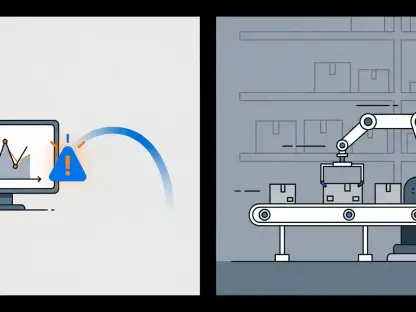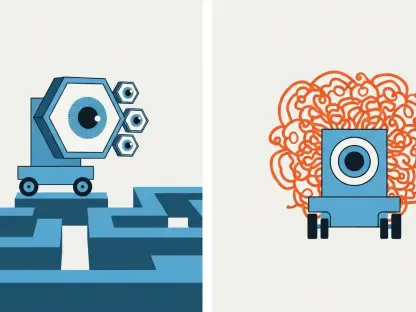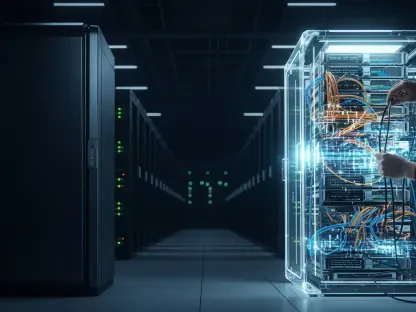I’m thrilled to sit down with Laurent Giraid, a renowned technologist whose deep expertise in artificial intelligence has made him a sought-after voice in the field. With a focus on machine learning, natural language processing, and the ethical implications of AI, Laurent offers a unique perspective on the latest advancements in the industry. Today, we’re diving into the recent developments surrounding a powerful AI model with an expanded context window, exploring how this breakthrough impacts developers, reshapes competitive dynamics, and influences enterprise adoption. Our conversation touches on the technical significance of processing vast amounts of data in one go, the practical applications for software development, and the broader implications for cost, accuracy, and safety in AI systems.
What does a 1 million token context window mean for AI models, and why is this such a game-changer for developers?
A 1 million token context window is a massive leap forward in how much information an AI model can handle in a single request. Tokens are essentially pieces of data—words, code snippets, or other units of meaning—and being able to process a million of them at once means the model can take in something as large as an entire software project or multiple lengthy documents without needing to break them into smaller bits. For developers, this is huge because it eliminates the tedious process of segmenting data, which often led to losing critical connections between different parts of a project. Now, they can get a holistic view and more coherent assistance from the AI, whether they’re debugging code or synthesizing research.
How does this expanded capacity enhance the ability to analyze entire software projects or codebases?
With this kind of capacity, developers can load up complete codebases—think tens of thousands of lines of code—and the AI can understand the full architecture, not just isolated files. This means it can spot inconsistencies, suggest optimizations, or even refactor entire systems in a way that respects how different components interact. For instance, a developer working on a complex web application could ask the AI to identify performance bottlenecks across the entire project, and the model would consider everything from front-end scripts to back-end logic in one go, offering insights that were previously impossible without manual stitching of feedback.
Can you explain what ‘needle in a haystack’ tests are and why they’re important for evaluating AI performance?
These tests are designed to measure an AI’s ability to find and use specific information buried within enormous volumes of text or data. Imagine hiding a single sentence in a stack of documents equivalent to two novels, then asking the AI to locate and apply that detail to answer a question. Achieving perfect performance in such tests shows that the model doesn’t just store data—it can retrieve and reason with precision. This matters because, in real-world scenarios like legal analysis or debugging, missing a tiny but critical detail can lead to errors. High accuracy here builds trust that the AI won’t overlook key information, no matter how much data it’s processing.
With several AI providers offering similar context capacities, what sets this particular model apart in a competitive market?
While raw capacity is important, the edge often comes down to accuracy and specialized performance, especially in areas like coding and reasoning tasks. This model has shown exceptional results in internal evaluations, particularly for developers who need reliable outputs on complex projects. Beyond that, it’s about the user experience—how well the AI maintains coherence over long interactions and integrates into workflows. There’s also a focus on balancing intelligence with speed and cost, which resonates with enterprises that need practical solutions rather than just the biggest or most powerful tool on paper.
Pricing for larger context prompts has increased. What’s behind this decision, and how might it impact adoption among developers and companies?
The price hike for prompts over a certain token threshold reflects the sheer computational power required to process such massive datasets. Handling a million tokens isn’t just a linear increase in effort—it demands exponentially more resources for memory and processing. For developers and companies, this could mean weighing the benefits against the cost, especially for smaller teams or startups with tight budgets. However, for enterprises dealing with large-scale projects, the value of getting comprehensive analysis in one request often outweighs the higher price tag. Features like prompt caching, where frequently used data is stored for reuse, also help mitigate costs by reducing redundant processing, making it more palatable for businesses with repetitive tasks.
Given the significant market share this AI provider holds in code generation, how critical is this context expansion to maintaining that leadership?
It’s incredibly important. Code generation is a cornerstone of their dominance, and this expanded context directly addresses a pain point for developers working on large projects. Being able to handle entire repositories in one shot strengthens their position by making the tool indispensable for production-scale engineering. It’s particularly beneficial for industries like software development and tech consulting, where clients often deal with sprawling, interconnected systems. By solving this bottleneck, the provider not only retains existing customers but also attracts new ones who were previously limited by smaller context windows in other tools.
Looking ahead, what is your forecast for the evolution of context capabilities in AI models and their impact on various industries?
I think we’re just scratching the surface with context expansion. Over the next few years, we’ll likely see even larger windows, paired with smarter mechanisms to prioritize relevant information, so the AI isn’t just processing more but processing better. This will transform industries far beyond tech—think legal firms analyzing thousands of contracts in one sweep, or financial analysts synthesizing market data across decades of reports. The bigger impact, though, will be in enabling truly autonomous AI agents that can handle multi-step tasks over days or weeks without losing track of the bigger picture. However, this also means we’ll need to double down on safety and ethical guidelines to manage the risks of such powerful systems. It’s an exciting, yet cautious, road ahead.









